 W
WAfro Samurai is a Japanese seinen dōjinshi manga series written and illustrated by manga artist Takashi Okazaki. It was originally serialized irregularly in the avant-garde dōjinshi manga magazine Nou Nou Hau from November 1998 to September 2002. Inspired by Okazaki's love of soul and hip hop music and American media, it follows the life of Afro Samurai who witnessed his father, Rokutaro killed by a male gunslinger named Justice while he was a child. As an adult, Afro sets off to kill Justice and avenge his father.
 W
WAngolmois: Record of Mongol Invasion is a Japanese historical manga series written and illustrated by Nanahiko Takagi. An anime television series adaptation by NAZ aired from July 11 to September 26, 2018.
 W
WAzumi (あずみ) is a Japanese manga series written and illustrated by Yū Koyama. Its story concerns the title character, a young woman brought up as part of a team of assassins, charged with killing the warlords that threaten the uneasy peace in Feudal Japan in the aftermath of its long Sengoku civil war period.
 W
WBlade of the Immortal is a Japanese manga series written and illustrated by Hiroaki Samura. The series is set in Japan during the mid-Tokugawa Shogunate period and follows the cursed samurai Manji, who has to kill 1,000 evil men in order to regain his mortality. The manga was originally published in Kodansha's Monthly Afternoon from June 1993 to December 2012 and compiled into thirty tankōbon volumes.
 W
WBlood Reign: Curse of the Yoma , also known as Curse of the Undead: Yoma, is a Japanese manga written and illustrated by Kei Kusunoki. The manga was serialized in Shueisha's manga magazine Ribon Original from 1985 to 1986. The individual chapters were collected into a one-shot bound volume by Shueisha on February 18, 1998. The manga was adapted into an original video animation by Takashi Anno.
 W
WCarried by the Wind: Tsukikage Ran is an animated action comedy written and directed by Akitaro Daichi, and produced by Madhouse Studios. The television series follows Ran and Meow, two wanderers who face all sorts of antagonists in Tokugawa Japan.
 W
WDōshirō de Gozaru is a Japanese manga series written and illustrated by Hiroyuki Nishimori. It was serialized in Shogakukan's shōnen manga magazine Weekly Shōnen Sunday from May 2004 to January 2006, with its chapters collected in eight tankōbon volumes.
 W
WThe Elusive Samurai is a Japanese historical manga series written and illustrated by Yusei Matsui. It has been serialized in Shueisha's Weekly Shōnen Jump since January 2021, with its chapters collected into four tankōbon volumes as of January 2022.
 W
WGin Tama is a Japanese manga series written and illustrated by Hideaki Sorachi. Set in Edo, which has been conquered by aliens named Amanto, the plot follows life from the point of view of samurai Gintoki Sakata, who works as a freelancer alongside his friends Shinpachi Shimura and Kagura to pay the monthly rent. Sorachi added the science fiction setting to develop characters to his liking after his editor suggested doing a historical series. It was serialized in Shueisha's Weekly Shōnen Jump from December 2003 to September 2018, later in Jump GIGA from December 2018 to February 2019, and finished on the Gin Tama app in May and June 2019.
 W
WHakuoki is a Japanese otome video game series by Idea Factory, released for the PlayStation 2 and ported to many other platforms. It has been adapted into an anime series by Studio Deen; the first series was broadcast from April to June 2010, and the second series was broadcast from October to December 2010. An OVA series, titled Hakuoki: A Memory of Snow Flowers and adapting from Hakuoki: Stories of Shinsengumi was released from August 2011 to July 2012. A third series based on the prequel, Hakuoki Reimeiroku was broadcast from July to September 2012. The series has also been adapted as two different manga series.
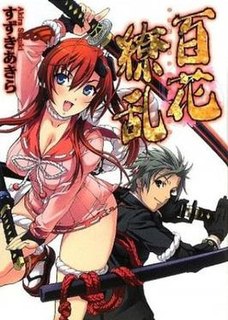 W
WHyakka Ryōran: Samurai Girls is a Japanese light novel series written by Akira Suzuki with illustrations by Niθ to commemorate Hobby Japan's 40th anniversary. The first volume was released by Hobby Japan on February 28, 2009, with 17 volumes currently available in Japan under their HJ Bunko imprint. There are currently three different manga adaptations based on the Hyakka Ryoran universe published. An online anthology comic was serialized on Hobby Japan's media website Hobby Channel from June 1, 2010, and sold two volumes as of June 2011; a manga adaptation illustrated by Junichi Iwasaki began serialization in the November 2010 issue of Monthly Comic Alive; and another manga adaptation by Tatara Yano began serialization in Hobby Japan's online manga magazine Comic Dangan on December 23, 2011. A spinoff manga called Hyakka Ryōran: Sengoku Maidens, illustrated by Yuri Shinano, was serialized in the March 2009 issue of Dengeki Daioh and ended in the March 2011 issue, and released three volumes as of March 2012.
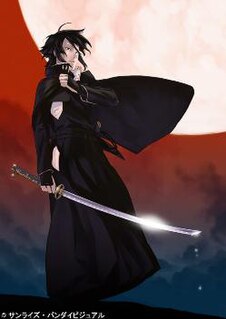 W
WIntrigue in the Bakumatsu – Irohanihoheto is a Japanese original net animation (ONA) series, created by Ryōsuke Takahashi and Sunrise. The series follows Yojiro Akizuki, the bearer of the legendary Moon Tear Sword, who is on a mission to seal a supernatural object known as the Head of the Conqueror, which has now appeared during the Boshin War. Yojiro will not rest until his mission is fulfilled, no matter what or who gets in his way.
 W
WKatanagatari is a Japanese light novel series written by Nisio Isin and illustrated by Take. The series is published by Kodansha under the Kodansha Box imprint. The story revolves around a katanagari, or "sword hunt" for 12 weapons that were created by a single swordsmith. An anime adaptation by White Fox began airing on January 26, 2010, and consisted of 12 episodes. A single episode of the series was aired each month. NIS America have licensed the series and released the first part on a Blu-ray/DVD combo set in July 2011. Part two was released on September 20, 2011. The anime series aired once more on Fuji TV's noitamina between April and November 2013 as the block's first rerun, with a new opening and a new ending song.
 W
WHana no Keiji is a Japanese period manga series, based on the novel Ichi-Mu-An Fūryūki by Keiichiro Ryu and illustrated by Tetsuo Hara. It was serialized in Shueisha's Weekly Shōnen Jump from March 1990 to August 1993. The story serves as a fictionalized account of the life of Keiji Maeda. Hana no Keiji is one of best-selling Weekly Shōnen Jump manga series of all time, with over 17 million copies in circulation. An English adaptation was published in Raijin Comics under the shortened title Keiji.
 W
WLady Snowblood is a Japanese manga series written by Kazuo Koike and illustrated by Kazuo Kamimura. It was serialized in Shueisha's Weekly Playboy magazine from February 1972 to March 1973. The series revolves around the title character, a female assassin who seeks vengeance against the bandits who raped her mother and murdered both of her father and older brother, often using her sexual appeal to distract her foes.
 W
WLone Wolf and Cub is a Japanese manga series created by writer Kazuo Koike and artist Goseki Kojima. First published in 1970, the story was adapted into six films starring Tomisaburo Wakayama, four plays, a television series starring Kinnosuke Yorozuya, and is widely recognized as an important and influential work.
 W
WMagic Boy, known in Japan as Shōnen Sarutobi Sasuke , is a 1959 Japanese animated feature film released on December 25, 1959. Released as Toei Animation's second theatrical anime, the film was released in theaters in United States by Metro-Goldwyn-Mayer on June 22, 1961, making it the first anime film to be released in the country, followed by The Tale of the White Serpent on July 8, 1961.
 W
WThe Soul Eater manga and anime series features an extensive cast of fictional characters created by Atsushi Ōkubo. It is set in a fictional universe inhabited by various characters capable of using supernatural powers by channeling the wavelengths of their souls. Most of the characters in the series, including the main protagonists, are classified into two groups: humans who are born with the power to turn into weapons, called demon weapons, and the wielders of these weapons, called meisters. The main protagonists attend a school called Death Weapon Meister Academy (DWMA) located in the fictional Death City in Nevada, United States. DWMA is run by Shinigami, also known as Death, the Grim Reaper, as a training facility for weapons and meisters to hone their powers, as well as an organization to preserve world order against anyone who threatens it, including witches, monsters and evil demons called kishin.
 W
WMoribito: Guardian of the Spirit is a Japanese novel that was first published in July 1996. It is the first in the 12-volume Moribito (守り人) series of Japanese fantasy novels by Nahoko Uehashi. It was the recipient of the Batchelder Award An ALA Notable Children's Book in 2009. It has since been adapted into numerous media, including radio, manga, anime, and taiga drama adaptations. Scholastic released the first novel in English in June 2008. Media Blasters has confirmed that they acquired the rights to the anime. The anime series adaptation premiered on Adult Swim in the U.S. at 1:30 a.m. ET on August 24, 2008, but was dropped from the schedule without warning or explanation on January 15, 2009, after two runs of the first ten episodes. The program returned to Adult Swim during the summer 2009 line-up with an airing of the entire series.
 W
WMushibugyō (ムシブギョー) is a Japanese manga series written and illustrated by Hiroshi Fukuda. It was serialized in Shogakukan's Shōnen Sunday Super from August 2009 to September 2010, with its chapters collected in three tankōbon volumes. A second series, Jōjū Senjin!! Mushibugyō, a retelling of the original series, was serialized in Weekly Shōnen Sunday from January 2011 to September 2017, with its chapters collected in thirty-two tankōbon volumes.
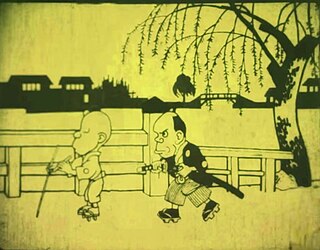 W
WNamakura Gatana (なまくら刀) or Hanawa Hekonai meitō no maki (塙凹内名刀之巻) is a short Japanese animated film produced by Jun'ichi Kōuchi in 1917. It was found in an antique shop in Osaka in March 2008. This film is a 4-minute silent short that tells a history about a samurai's foolish purchase of a dull-edged sword. It was released on June 30, 1917, and is among the very earliest examples of anime.
 W
WNekogahara: Stray Cat Samurai is a Japanese manga series written and illustrated by Hiroyuki Takei. It was serialized in Kodansha's Shōnen Magazine Edge from September 2015 to April 2018.
 W
WNinja Resurrection, known in Japan as Makai Tenshō: Jigoku Hen is a two-part original video animation directed by Yasunori Urata.
 W
WNinja Scroll is a 1993 Japanese animated jidaigeki-chanbara action film written and directed by Yoshiaki Kawajiri, starring the voices of Kōichi Yamadera, Emi Shinohara, Takeshi Aono, Daisuke Gōri, Toshihiko Seki and Shūichirō Moriyama. The film was a co-production between JVC, Toho and Movic, with Madhouse serving as the animation studio. Ninja Scroll was theatrically released in Japan on June 5, 1993, and received an English-dubbed release in Western countries through Manga Entertainment in 1995.
 W
WOnihei Hankachō (鬼平犯科帳) is a series of historical novels written by Japanese author Shōtarō Ikenami. Following the character Heizo Hasegawa in the Edo period of Japan, Ikegami wrote the first story for the December 1967 issue of the light novel magazine Ōru Yomimono published by Bungeishunjū. It was well-received and began serialization in January 1968. Ikenami wrote 19 books in the main series before he died in 1990. As of 2021, the series had 30 million copies in circulation.
 W
WPath of the Assassin is a gekiga manga created by the writer Kazuo Koike and the artist Goseki Kojima and published in Weekly Gendai magazine (Kodansha). Unlike their previous collaborations on Lone Wolf and Cub and Samurai Executioner, this story focuses on two historical figures from 16th-century Japan.
 W
WPeacemaker Kurogane is a Japanese manga series written and illustrated created by Nanae Chrono. It is unrelated to the Peace Maker manga by Ryōji Minagawa. The story begins in 19th century Japan before the Meiji Restoration, a chain of events that led to enormous changes in Japan's political and social structure while the seeds of the revolution are being planted. The story follows the boy protagonist, Tetsunosuke Ichimura, who joins the Shinsengumi while seeking strength to avenge his parents' death at the hands of a Chōshū rebel.
 W
WRonin Warriors, known in Japan as Legendary Armor Samurai Troopers , is a Japanese anime series created by Hajime Yatate and animated by Sunrise. The television series, co-produced by Nagoya TV, aired across Japan on the All-Nippon News Network from April 30, 1988, to March 4, 1989 for a total of 39 episodes. A manga adaptation was serialized on Kodansha’s Comic BomBom from November 17, 1988 to April 5, 1990 and the chapters collected into 2 tankōbon volumes.
 W
WRurouni Kenshin: Meiji Swordsman Romantic Story is a Japanese manga series written and illustrated by Nobuhiro Watsuki. The story begins during the 11th year of the Meiji period in Japan (1878) and follows a former assassin from the Bakumatsu, known as Hitokiri Battosai. After his work against the bakufu, Hitokiri Battosai disappears to become Himura Kenshin: a wandering swordsman who protects the people of Japan with a vow never to take another life. Watsuki wrote the series upon his desire to make a shōnen manga different from the other ones that were published at the time, with Kenshin being a former assassin and the story taking a more serious tone as it continued. The manga revolves around themes of atonement, peace, and romance.
 W
WRurouni Kenshin, also known sometimes as Samurai X, is a Japanese anime television series, based on the manga series of the same name created by Nobuhiro Watsuki. The series was produced by Studio Gallop, Studio Deen and SPE Visual Works and directed by Kazuhiro Furuhashi. It was broadcast in Japan on Fuji TV from January 1996 to September 1998. Besides an animated feature film, three series of original video animations (OVAs) were also produced. The first adapted stories from the manga that were not featured in the anime, the second was a sequel to the manga series, and the third was a reimagining of the second arc of the series.
 W
WRurouni Kenshin: Master of Flame is a two-chapter Japanese manga written and illustrated by Nobuhiro Watsuki. It is a spin-off of the main series Rurouni Kenshin. It tells the story about how Shishio Makoto met Komagata Yumi and formed the Juppongatana.
 W
WRurouni Kenshin: New Kyoto Arc is a series of two original video animations created by Studio Deen that retell the Kyoto arc of Nobuhiro Watsuki's manga Rurouni Kenshin. The story focuses on the young Oniwabanshu Makimashi Misao who encounters the protagonist, the wanderer Himura Kenshin, who is on a quest to defeat the forces of his hitokiri successor Shishio Makoto.
 W
WRurouni Kenshin: Reflection is a Japanese original video animation (OVA) which serves as a sequel to the Rurouni Kenshin anime television series, an adaptation of the manga series of the same name created by Nobuhiro Watsuki. It was produced by Studio Deen, directed by Kazuhiro Furuhashi and written by Reiko Yoshida and released in Japan from December 19, 2001 to March 20, 2002.
 W
WRurouni Kenshin: Restoration is a Japanese manga series written and illustrated by Nobuhiro Watsuki. It is a remake of his Rurouni Kenshin series, and served to promote the then upcoming live-action film released in August 2012. The manga was serialized in Shueisha's Jump Square from May 2012 to June 2013 and collected into two tankōbon volumes.
 W
WRurouni Kenshin: Meiji Swordsman Romantic Story — The Hokkaido Arc is a Japanese manga series written and illustrated by Nobuhiro Watsuki. His wife, Kaworu Kurosaki, is credited as a story consultant. It is a direct sequel to Rurouni Kenshin and follows Himura Kenshin and his friends in 1883 Japan as they traverse Hokkaido in search of his father-in-law.
 W
WRurouni Kenshin: Trust & Betrayal, known in Japan as Rurōni Kenshin -Meiji Kenkaku Rōman Tan- Tsuioku-hen , is an original video animation (OVA) series, based on the Rurouni Kenshin manga series written and illustrated by Nobuhiro Watsuki, and it is a prequel to the anime television series adaptation of the same name. Trust & Betrayal chronicles the story of Himura Kenshin as the Hitokiri Battōsai during the final years of the Bakumatsu era while also revealing the origins of his cross-shaped scar and exploring his relationship with a woman named Yukishiro Tomoe.
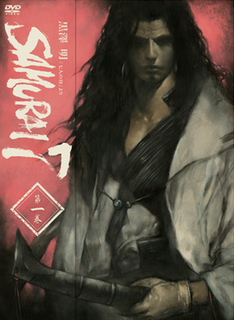 W
WSamurai 7 is a 2004 anime television series produced by Gonzo and based on the 1954 Akira Kurosawa film Seven Samurai. The seven samurai have the same names and similar characteristics to their counterparts from the original. The series was directed by Toshifumi Takizawa, and its music was composed by Kaoru Wada and Eitetsu Hayashi. There are 26 episodes.
 W
WSamurai 8: The Tale of Hachimaru is a Japanese manga written by Masashi Kishimoto and illustrated by Akira Ōkubo. It was serialized in Shueisha's Weekly Shōnen Jump from May 2019 to March 2020, with its chapters collected in five tankōbon volumes. In North America, Viz Media published the series on the Shonen Jump platform, and started the print release of the series in March 2020. Shueisha published it on the Manga Plus platform.
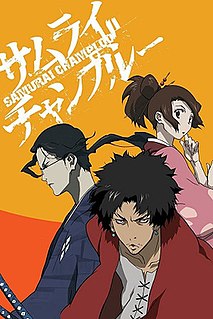 W
WSamurai Champloo is a 2004 Japanese anime television series. The debut television production of studio Manglobe, the 26-episode series aired between May 2004 and March 2005. It was first partially broadcast on Fuji TV, then had a complete airing on Fuji Network System. It was licensed for North American broadcast on Adult Swim, and for commercial release first by Geneon Entertainment and later by Funimation. It was also licensed for English releases in the United Kingdom by MVM Films, and in Australia and New Zealand by Madman Entertainment. A manga adaptation was serialized in Monthly Shōnen Ace during 2004, later released in North America by Tokyopop the following year.
 W
WChanbara (チャンバラ), also commonly spelled "chambara", meaning "sword fighting" movies, denotes the Japanese film genre called samurai cinema in English and is roughly equivalent to Western and swashbuckler films. Chanbara is a sub-category of jidaigeki, which equates to period drama. Jidaigeki may refer to a story set in a historical period, though not necessarily dealing with a samurai character or depicting swordplay.
 W
WSamurai Crusader: The Kumomaru Chronicles is a Japanese manga series written by Oji Hiroi and illustrated by Ryoichi Ikegami. It was serialized in Shogakukan's Weekly Shōnen Sunday from July 1991 to March 1992, with its chapters collected in three tankōbon volumes. In North America, the manga was licensed by Viz Media, which serialized it in their Manga Vizion magazine in 1995.
 W
WSamurai Deeper Kyo is a manga series written and illustrated by Akimine Kamijyo. Set during the Edo period of Japan's history, Samurai Deeper Kyo follows Demon Eyes Kyo , a feared samurai seeking to regain his body after his soul is sealed inside the body of his rival, Mibu Kyoshiro. Kyo is joined in his search by the bounty-hunter Shiina Yuya, the heir to the Tokugawa shogunate Benitora; and Sanada Yukimura, a known rival of the Tokugawa.
 W
WSamurai Executioner, known in Japan as Kubikiri Asa (首斬り朝), is a 10-volume manga created by writer Kazuo Koike and artist Goseki Kojima, the same team that created the popular Lone Wolf and Cub series. The series was first serialized in Japan, from 1972–1976. Samurai Executioner is set earlier than Lone Wolf and Cub, with the main character of the former series appearing in a chapter of the latter.
 W
WSamurai Girl: Real Bout High School is a Japanese light novel series written by Reiji Saiga and illustrated by Sora Inoue. It was serialized in Dragon Magazine from 1997 to 2010. A manga adaptation by the same authors was serialized in Monthly Comic Dragon from 1998 to 2001. A 13-episode anime television series was produced by Gonzo in 2001. It is set in a school called Daimon High, where disagreements among the student body are settled by martial arts matches called K-Fights.
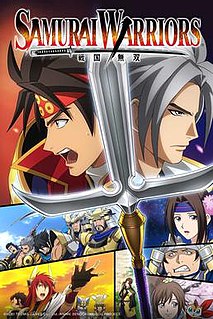 W
WSamurai Warriors is a Japanese anime adaptation of Samurai Warriors 4-II. It takes place after the events of its previous animated TV special. Original characters appeared in this narrative to deviate from its base. Voice actors from the game reprise their roles for their respective characters.
 W
WSengoku Basara: End of Judgement is an anime television series based on the Sengoku Basara games originally created by CAPCOM. It began airing on July 6, 2014 on NTV and tells its own version of the story from the video game Sengoku Basara: Samurai Heroes.
 W
WSengoku Basara: Samurai Kings is a Japanese anime television series based on the Capcom video game series of the same name made by Production I.G, planned and written by Yasuyuki Muto, and chiefly directed by Itsuro Kawasaki. The series started broadcast on Japan's Chubu-Nippon Broadcasting (CBC) station in April 2009; other networks broadcast the episodes within a few days, including TBS, MBS, and Animax. Its first season made its North American television debut on the Funimation Channel on November 16, 2010.
 W
WSengoku Basara: The Last Party is an anime film that portrays the end of the Sengoku period. It is the finale to an anime series known as Sengoku Basara: Samurai Kings. The film was released in Japanese theaters on June 4, 2011. Kazuya Nakai, Sōichirō Hoshi, Tōru Ōkawa, Tomokazu Seki, Masakazu Morita, Toshiyuki Morikawa, Takehito Koyasu, Norio Wakamoto, and Mamiko Noto reprise their roles from the Samurai Kings series with Fumihiko Tachiki, Show Hayami, and Jun Fukuyama co-starring as those who first appeared in Sengoku Basara: Samurai Heroes.
 W
WShigurui is a Japanese manga series by Takayuki Yamaguchi, based on the first chapter of the novel Suruga-jō Gozen Jiai by Norio Nanjō. An anime television adaptation, based on the first 32 chapters, aired on Wowow from July 19 to October 12, 2007. The series was directed by Hiroshi Hamasaki, written by Seishi Minakami, and produced by Madhouse Studios. The anime was licensed in North America by Funimation under the fully translated title Shigurui: Death Frenzy. The licensing was announced in May 2008 and the full series was released on March 31, 2009, on Blu-ray and DVD. The manga and anime are both known for their graphic violence and sexual content.
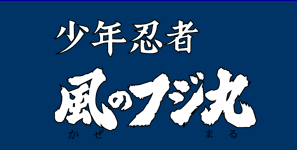 W
WFujimaru of the Wind: The Childhood of a Ninja , also known as Samurai Kid, is a Japanese anime series produced by Toei Animation. 65 episodes aired from 7 June 1964 until 31 August 1965. It tells the story of a ninja's pupil that controlled the wind.
 W
WThe Sword of Shibito is a manga series written by Hideyuki Kikuchi and illustrated by Missile Kakurai . It was serialized in the Japanese seinen manga magazine Comic Birz from 1998 until 2002. The Sword of Shibito was also licensed in English by Central Park Media and in French by 12 Bis.
 W
WSword of the Stranger is a 2007 Japanese animated jidaigeki-chanbara adventure film produced by Bones and released by Shochiku. It depicts Kotaro, a young orphan hunted by Ming swordsmen, who receives unexpected protection from Nanashi, a troubled ronin.
 W
WTakemitsuzamurai or Takemitsu Zamurai is a Japanese historical samurai manga series written by Issei Eifuku and illustrated by Taiyō Matsumoto. It was published in Shogakukan's Big Comic Spirits seinen manga magazine, with its chapters collected in eight wideban volumes.
 W
WThe Yagyu Ninja Scrolls: Revenge of the Hori Clan is an 11-volume manga series written by Masaki Segawa and first published in Japan by Kodansha in 2005.
 W
WYasuke is a Japanese-American original net anime series loosely based on the historical figure of the same name, an African warrior who served under Japanese daimyo Oda Nobunaga during the Sengoku period of samurai conflict in 16th century Japan. Created by LeSean Thomas and animated by Japanese animation studio MAPPA, the series stars Lakeith Stanfield as the titular character. The series was released on Netflix on April 29, 2021.
 W
WYōtōden is a 3-episode Japanese original video animation produced by J.C.Staff, the studio's first production. In 1989, Yōtōden was re-edited into a feature film version titled Wrath of the Ninja for English-speaking regions, but is currently out of print. A manga adaptation was serialized in Newtype.